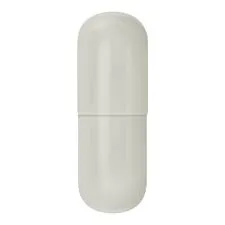
Dec . 13, 2024 22:02 Back to list
hpmc solution preparation
Preparation of HPMC Solution A Comprehensive Guide
Hydroxypropyl methylcellulose (HPMC) is a versatile and widely used polymer in various industries, particularly in pharmaceuticals, food, cosmetics, and construction. It functions as a thickening agent, stabilizer, emulsifier, and film former. Its unique properties such as non-toxicity, biocompatibility, and low allergenic potential make it suitable for numerous applications. The successful preparation of an HPMC solution is crucial to harnessing its capabilities effectively. This article outlines the key steps involved in preparing an HPMC solution, as well as the important considerations and tips for achieving optimal results.
Understanding HPMC
Before delving into the preparation process, it is essential to understand what HPMC is and how it behaves in solution. HPMC is a cellulose derivative that consists of hydroxypropyl and methoxy groups. Its solubility in water varies with the degree of substitution and molecular weight. HPMC is typically available in various grades, which influence its viscosity and solubility characteristics. Depending on the application, one can select an appropriate grade that meets specific requirements.
Materials Required
To prepare an HPMC solution, you will need the following materials
1. HPMC powder Choose the appropriate grade based on your intended application. 2. Solvent Usually, purified water is preferred, but other solvents may be used depending on the formulation. 3. Heating apparatus A hot plate or similar equipment to aid in dissolving HPMC. 4. Stirring tool A magnetic stirrer or mechanical agitator for uniform mixing. 5. Measuring instruments Accurate scales, volumetric flasks, and graduated cylinders for precise measurements.
Step-by-Step Preparation
1. Measure the Required Amount of HPMC Based on the desired concentration of the final solution, measure the appropriate amount of HPMC powder. Generally, concentrations range from 1% to 5%, depending on the intended use.
2. Prepare the Solvent Measure the required volume of purified water or chosen solvent. If heating is necessary, preheat the solvent to around 60°C to 70°C. This temperature range is sufficient to facilitate dissolution without degrading the HPMC.
hpmc solution preparation

3. Gradual Addition of HPMC Slowly sprinkle the measured HPMC powder into the pre-heated solvent while continuously stirring. It is crucial to add the powder gradually to prevent clumping and ensure uniform dispersion.
4. Stirring Use a magnetic stirrer or mechanical mixer to keep the solution agitated. This will help break down any lumps and promote even dissolution. Continue stirring until the HPMC is fully dissolved, which may take anywhere from 30 minutes to several hours depending on the concentration and grade used.
5. Cooling and Adjustment After the HPMC is completely dissolved, allow the solution to cool to room temperature. If necessary, adjust the volume with additional solvent to achieve the desired concentration.
6. Filtration To remove any undissolved particles or agglomerates, filter the solution through a fine mesh or filter paper. This step ensures a smooth and homogeneous final product.
7. Storage Store the prepared HPMC solution in a clean, airtight container to prevent contamination and degradation. It is advisable to label the container with the concentration, date of preparation, and any other relevant information.
Important Considerations
- Viscosity The viscosity of the HPMC solution increases with concentration and molecular weight. Ensure you select a grade that aligns with your application needs. - pH Stability HPMC is stable across a wide pH range, but extreme pH conditions can affect its properties. It is advisable to maintain a neutral pH for optimal performance. - Compatibility Consider the compatibility of HPMC with other ingredients in your formulation, as certain substances may interact negatively.
Conclusion
The preparation of an HPMC solution may seem straightforward, but attention to detail is paramount for achieving the desired outcome. By carefully following the steps outlined above and considering the various factors that influence the dissolution and performance of HPMC, you can produce a high-quality solution suitable for your specific applications. Whether utilized in pharmaceuticals, food products, or building materials, HPMC continues to be a valuable resource in modern formulation chemistry.
-
Versatile Hpmc Uses in Different Industries
NewsJun.19,2025
-
Redispersible Powder's Role in Enhancing Durability of Construction Products
NewsJun.19,2025
-
Hydroxyethyl Cellulose Applications Driving Green Industrial Processes
NewsJun.19,2025
-
Exploring Different Redispersible Polymer Powder
NewsJun.19,2025
-
Choosing the Right Mortar Bonding Agent
NewsJun.19,2025
-
Applications and Significance of China Hpmc in Modern Industries
NewsJun.19,2025







